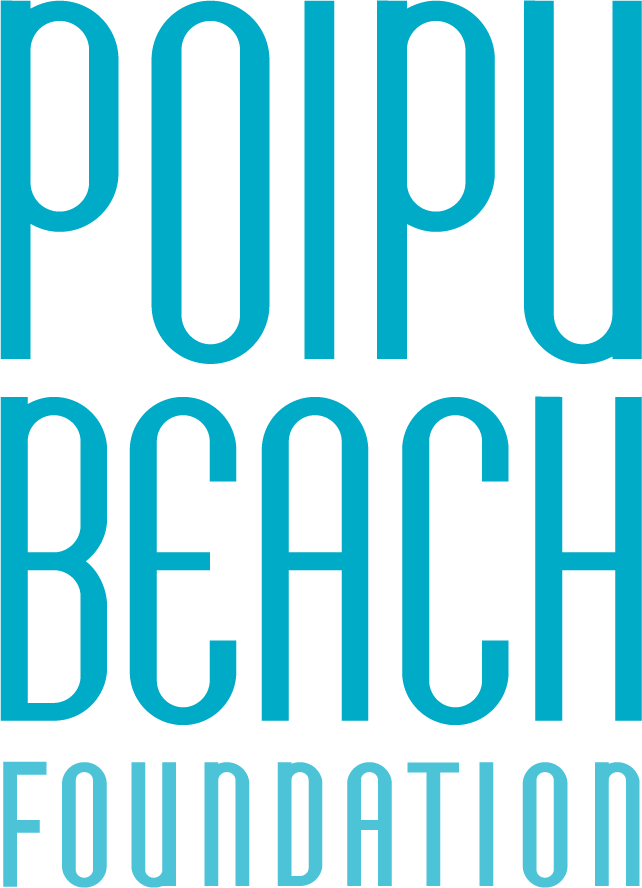Aloha, and welcome to Ka Ala Hele Waiwai Ho’olina o Koloa, The Koloa Heritage Trail. Your journey will whisk you through 5 million years of exploration highlighting the natural history, archaeology, culture and history of the Koloa District of Kauai and its people.
The Koloa Heritage Trail is a 10 mile walk, bike ride or drive which includes 14 stops and monuments describing the significance of the location. If you would like to receive a Koloa Heritage Trail guide, call us at 1-888-744-0888 or click here.
Download a PDF copy (5.2mb) of the Koloa Heritage Trail
1. Spouting Horn Park
Spouting Horn Park was called puhi, or blowhole, by early Hawaiians. Legends tell of a huge mo`o, or lizard, caught in this puhi, which was formed when waves eroded softer, underlying rock and wore through the harder top rock. Water rushing into the hole is forced through the narrow opening and shoots skyward.
2. Prince Kuhio Birthplace & Park
Prince Jonah Kuhio Kalanianaole was born in Koloa in a grass hut near this beach to Princess Kinoike Kekaulike and High Chief David Kahalepouli Pi`ikoi. He became a delegate to U.S. Congress after Hawai`i became a Territory in 1900, serving for 19 years. He worked tirelessly on behalf of the Hawaiian people.
3. Hanaka’ape Bay & Koloa Landing
Once, Koloa Landing was the third largest whaling port in all of Hawai`i and the only port of entry for foreign goods. The Sugar industry increased its use until 1912, when better facilities became available elsewhere. Goods and people were transferred by hand and small boat to ships in Hanaka`ape Bay.
4. Pa’u A Laka – Moir Gardens
What began as a hobby garden by the Koloa Plantation Manager’s wife became celebrated as one of the world’s best of its kind. Numerous cactus planted in the 1930s thrived in the arid, rocky soil here. Many escaped to surrounding areas to become naturalized over time. You’ll also find water lily-filled lava rock ponds, koi and a variety of orchid and catus species.
5. Kihahouna Heiau
The walled heiau (temple) that once stood here was 130 feet by 90 feet; dedicated to Kane, a major god of Hawaii; Hulukoki, a bird god; and Ku-hai-moana and Ka-moho-alii, two shark gods. Three hala-lihilihi-ula trees situated on the outside of the naupaka hedge mark the heiau perimeter.
6. Poipu Beach Park
Abundant, easy-to-view marine life in calm waters is a major attraction at Po`ipu Beach. The endangered native Hawaiian Monk seal and threatened Green sea turtle are frequent visitors. From November through May, the endangered Humpback whale appears. Ancient Hawaiians fished and played here and harvested salt in dug-out evaporating pans nearby.
7. Keoneloa Bay
Between 200 and 600 A.D., early visitors arrived at Keoneloa Bay, meaning long sand, likely from the Marquesas Islands. They used the area as a temporary fishing camp, leaving behind stone-age tools, remnants of heiau, or temples, and ahu, or altars. They prayed to Kane`aukai, an important fishing god.
8. Makawehi & Pa’a Dunes
The lithified sand dunes of Makawehi, calm face, and Pa`a, hard rock, yield fossilized plant roots, bird bones, crab claws and other treasures. Prior to extensive wave erosion, this prominent limestone ridge extended across Keoneloa Bay. During March through November, water birds visit and sea birds nest and roost in the dunes.
9. Pu’uwanawana Volcanic Cone
More than 5 million years ago, a hotspot in the earth spewed lava upward to form the volcanic mountain island of Kaua`i. Nearby Ha`upu Ridge and Mountain contain some of the oldest geologic formations. Look for the youngest volcanic cones such as Pu`uwanawana, within view. Weathered volcanic material produced rich agricultural plains.
10. Hapa Road
Lava rock walls near Hapa Road signify Hawaiian habitation ca. 1200 A.D., while the road dates to the late 1800s. Nearby tracks once held trains hauling cane to Koloa Plantation for milling. Hapa Road served as a supply and emergency evacuation route during World War II, and at various times a foot- and bicycle path.
11. Koloa Jodo Mission
Buddhist temples provided Japanese immigrants a place to worship, study their language, learn martial arts and participate in social events. This Jodo Mission used a specialist in temple architecture from Japan to build the large temple’s interior. Hand-painted, wooden ceiling tiles were a gift from the Japanese artist who rendered them.
12. Sugar Monument
Ancient Polynesians were the first to bring sugar cane to Hawai’i. Starting with its first cane seeding in 1835, Koloa Plantation was the first in Hawai’i to successfully mill cane commercially for export. It set the precedent for free housing and medical benefits for its immigrant employees from China, Japan, East and West Germany, Portugal and the Philippines.
13. Yamamoto Store & Koloa Hotel
Built at the turn of the 20th century, The Yamamoto Building functioned at various times as a plantation camp store and general store with service station. Behind it, the Koloa Hotel offered rooms to traveling salesmen and actors. The o-furo, or hot tub, provided a relaxing soak to guests.
14. Koloa Missionary Church
Koloa Missionary Church sanctuary is part of a homestead once owned by Dr. James W. Smith, a medical missionary. In 1842, he began a practice of over 40 years, later becoming an ordained minister at The Church at Koloa. His grandson, Dr. Alfred Herbert Waterhouse, added a clinic to the homestead in 1933.
